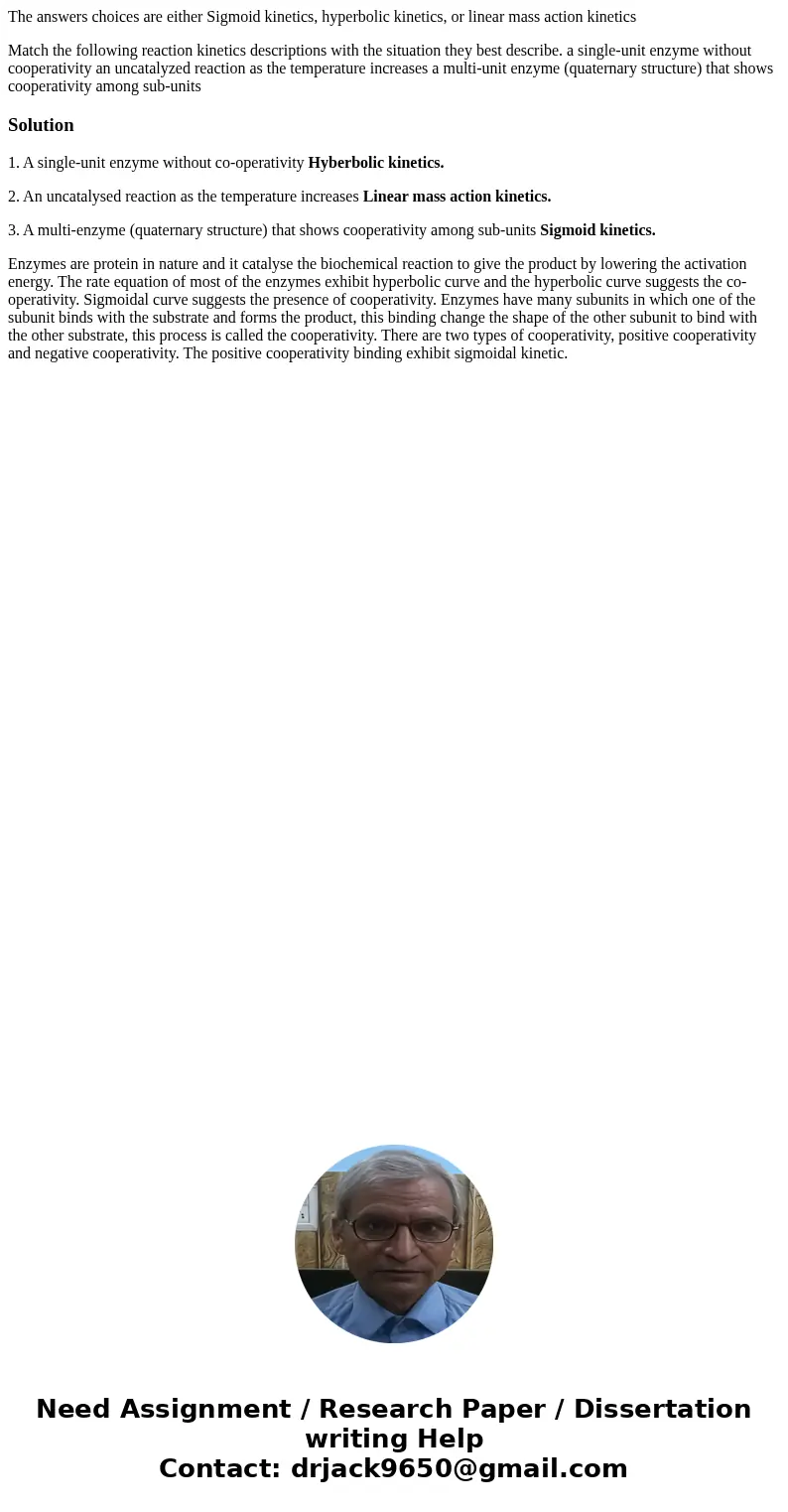The answers choices are either Sigmoid kinetics hyperbolic k
The answers choices are either Sigmoid kinetics, hyperbolic kinetics, or linear mass action kinetics
Match the following reaction kinetics descriptions with the situation they best describe. a single-unit enzyme without cooperativity an uncatalyzed reaction as the temperature increases a multi-unit enzyme (quaternary structure) that shows cooperativity among sub-unitsSolution
1. A single-unit enzyme without co-operativity Hyberbolic kinetics.
2. An uncatalysed reaction as the temperature increases Linear mass action kinetics.
3. A multi-enzyme (quaternary structure) that shows cooperativity among sub-units Sigmoid kinetics.
Enzymes are protein in nature and it catalyse the biochemical reaction to give the product by lowering the activation energy. The rate equation of most of the enzymes exhibit hyperbolic curve and the hyperbolic curve suggests the co-operativity. Sigmoidal curve suggests the presence of cooperativity. Enzymes have many subunits in which one of the subunit binds with the substrate and forms the product, this binding change the shape of the other subunit to bind with the other substrate, this process is called the cooperativity. There are two types of cooperativity, positive cooperativity and negative cooperativity. The positive cooperativity binding exhibit sigmoidal kinetic.

 Homework Sourse
Homework Sourse